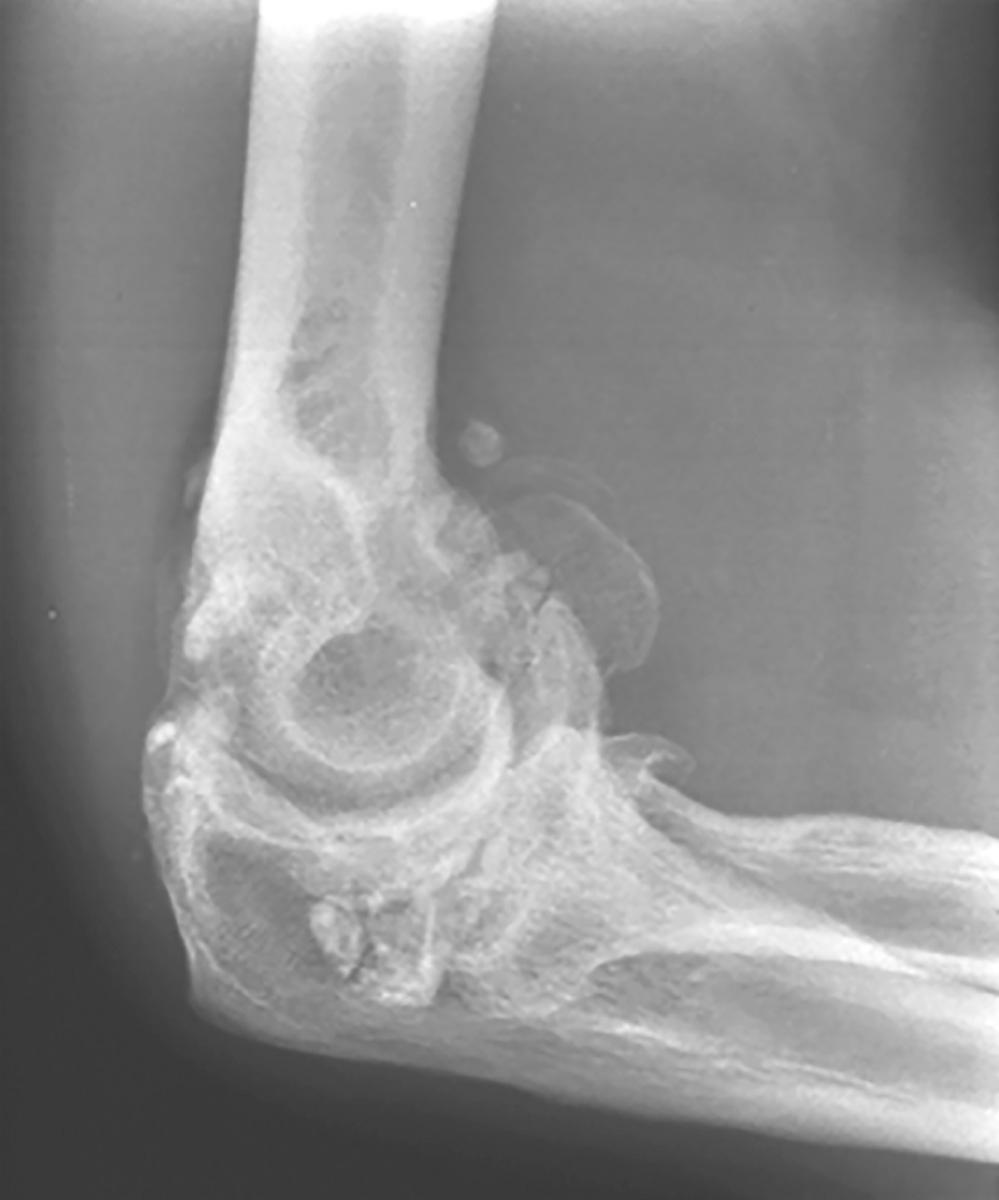Physical Address
304 North Cardinal St.
Dorchester Center, MA 02124
Primary osteoarthritis of the elbow as discussed in Chapter 76 is a relatively common condition historically linked to overuse of the joint over extended periods of time as in manual laborers or heavy weight lifters. Patients initially present with pain at the extremes of motion or note limitation of motion. Often, the primary complaint is loss of motion, especially extension; impingement pain comes secondarily. Frequently there is little or no pain in the mid-arc of flexion, and patients can be successfully treated with débridement consisting of osteophyte removal and capsulectomy (see Chapters 21 and 111 ). Nevertheless, a subset of patients may continue to have symptoms that include pain not only at terminal flexion and extension but also pain through the mid-arc of motion. In these patients, débridement alone is not as successful, and consideration for total elbow arthroplasty (TEA) should be given, particularly in elderly or lower demand patients. Because many patients with primary osteoarthritis do not fit this profile and are higher demand, the durability of TEA has been questioned for this indication. Hence of the several treatment options, selecting the appropriate procedure depends on the clinical and radiographic presentation ( Table 95.1 ). Arthroscopic and open débridement are discussed in Chapters 21 and 111 , respectively. Herein we focus only on arthroplasty treatment, recognizing that in our practice this is uncommonly indicated.
| PRESENTATION | Procedure | |
|---|---|---|
| Clinical | Radiographic | |
|
Small olecranon spur | None—activity; medication |
|
Larger olecranon/coronoid spurs | Column, arthroscopic débridement |
|
Loose body | Arthroscopic removal |
|
Osteophyte: foramina, coronoid/olecranon | Column, arthroscopy, ulnohumeral arthroplasty |
|
As above | Ulnohumeral arthroplasty, nerve decompression |
|
Extensive osteophytic changes, joint narrowing, capsular contracture | Age <65, interposition arthroplasty; age >65, semiconstrained total elbow arthroplasty |
|
Radiohumeral arthritis | Radial head replacement, possible capitellar replacement |
The specific but relative indications for joint replacement for primary arthritis include age older than 65 (?) and a patient who does not need or expect to require extensive use of the extremity. The other treatment options noted earlier must have failed or have been deemed inappropriate for the specific patient. Most importantly, patients who have pain throughout the arc of motion, especially in the functional range, are the best candidates for joint arthroplasty: interposition (see Chapter 114 ) or replacement. Extensive hypertrophic changes with the accompanying high-grade stiffness, often with ulnar nerve symptoms in the older patients, suggest that joint replacement may be appropriate ( Fig. 95.1 ). However, the limited arc and hypertrophic changes pose technical challenges to successful replacement.

The technical concerns are derived from the foregoing discussion:
Olecranon osteotomy must be avoided. Today we prefer the paraolecranon triceps-sparing approach (see Chapter 11 ).
Joint stiffness from capsular contracture and extensive osteophyte formation makes exposure of the joint more challenging. Extensive release of all contracted tissue is essential. For this reason we feel a linked implant is a necessity.
The ulnar nerve must be decompressed and translated.
The periarticular bone is usually very hard, and a burr may be needed to remove sclerotic bone from the metaphyseal region of both humerus and ulna.
Developing heterotopic ossification does occur owing to the hypertrophic response that is characteristic of the process. Furthermore, the procedure may create considerable debris, possibly contributing to the formation of ectopic bone.
Postoperatively, patients may have considerable swelling because of the extensive soft tissue dissection. If swelling is not controlled, motion and healing will both be compromised.
Become a Clinical Tree membership for Full access and enjoy Unlimited articles
If you are a member. Log in here